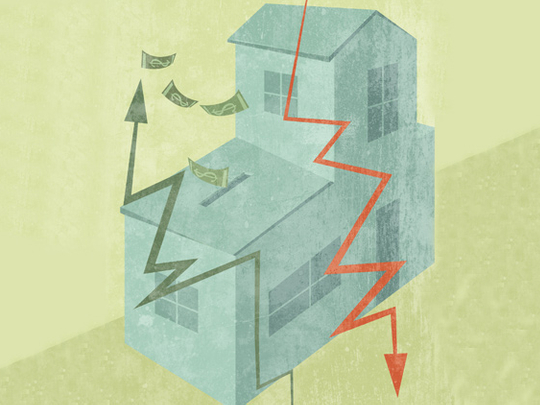
John Maynard Keynes, the father of macro-economics, always worried about “the dark forces of time and nature” forever clouding the future and adding to investor uncertainty and a subduing of “animal spirits”.
He called for rigorous data mining exercises to glean where the economy was heading and always looked for relationships between variables, prices, and even across countries to recommend policy action. In Dubai, with the current lull in the real estate market, the very same “dark forces” are causing some investor concern and it is worthwhile to look across the continents to look at market precedents that may help in investor decision-making.
In America, similar price trends are being observed in the last six months as is being witnessed in Dubai, which is to say that there has been a renewed price resurgence in the mid-income housing segment. In San Francisco and Los Angeles (the two cities noted for their froth at the top-end of the housing market), mid-income housing has outperformed the top tier market by over 60 and 90 per cent, respectively, in the last eight months.
In Seattle and Miami, similar trends have been witnessed with outperformance of 30 and 46 per cent. Zillow.com, a real estate brokerage and consultancy, opines that this is because the job creation that is being witnessed in these cities is at the mid-end, and that trophy buyers have been presented with a plethora of choices, implying excess supply at the top-end.
Zeroing in on New York, and looking at an extended time series analysis over 32 years, mid-income housing outperformed the trophy segment for 16 consecutive years from 1980-96.
It encompassed an entire boom-bust cycle (the bull market of 1980 to 1989 where mid-income housing appreciated by 180 per cent versus 155 per cent for the high end), and the bear market from 1989-1996 (where mid-income housing fell by 26 per cent whereas the high end under-performed by 32 per cent).
A micro-structure analysis of the market in this time period showed a startling correlation to job creation (where more than 55 per cent of the jobs created were in segments that required affordable housing, at a time when supply was inadequate to meet demand).
Mid-income rents and prices start to outperform
It is perhaps remarkable that Dubai witnessed the same thrust in its real estate market; between 2002 and 2011 trophy properties dominated the zeitgeist, both in terms of price appreciation and market coverage.
But in the current cycle, mid-income rents and prices have started to outperform the higher end of the market. In the last six months, affordable housing outperformed the top end by a factor of 30 per cent.
Indeed, if rental gauges are anything to look at, the picture becomes all the more clearer with rents rising by 50 per cent in the last 18 months in the mid-income space, whereas in areas like the Marina and Palm Jumeirah it was by a more modest 23 per cent.
It is for these reasons that rental yields are still at 6.9 per cent for the affordable segment, whereas they have fallen to 4.3 per cent at the higher end, prompting the Central Bank to warn that yields in this segment are trading at below historical levels.
What are investors to make of this? Firstly, it is evident that there is an acute shortage of mid-income housing, leading to extraordinary price and rental appreciation.
Unless government sponsored and private sector developers recalibrate their supply dynamic, this trend will accentuate. Dubai’s phase of real estate price cycle has been one where trophy properties have outperformed as developers have offered a spectacular array of dazzling projects. However, the job engine going forward is predominantly in the mid-income segment (43 per cent as per the Dubai Statistics Centre between now and 2020 or about 178,000 jobs).
Investors will do well to snap up properties in mid-income areas and a prudent investment would perhaps be to even buy land in communities such as DWC, Al Furjan, DSO, DRC, Arjan, Majan and Jumeirah Village.
Land Department statistics indicate that land purchases in these areas are already up 40 per cent, pointing to imminent price rises. A bird’s eye view certainly indicates that there has been a structural change in the job creation engine of the world economy and that mid-income housing opportunities will abound for the next few years.
The writer is the managing director of Global Capital Partners.












